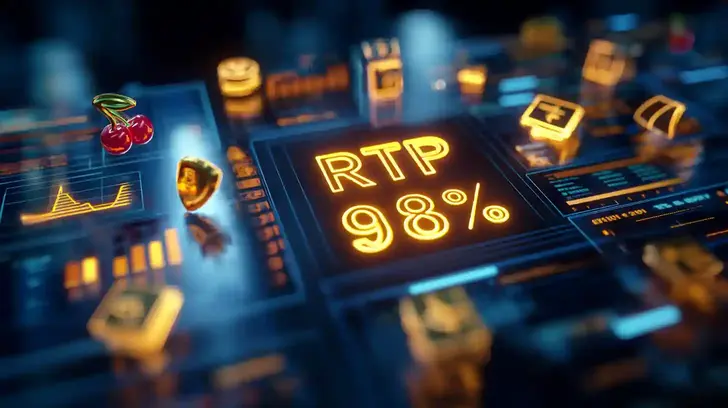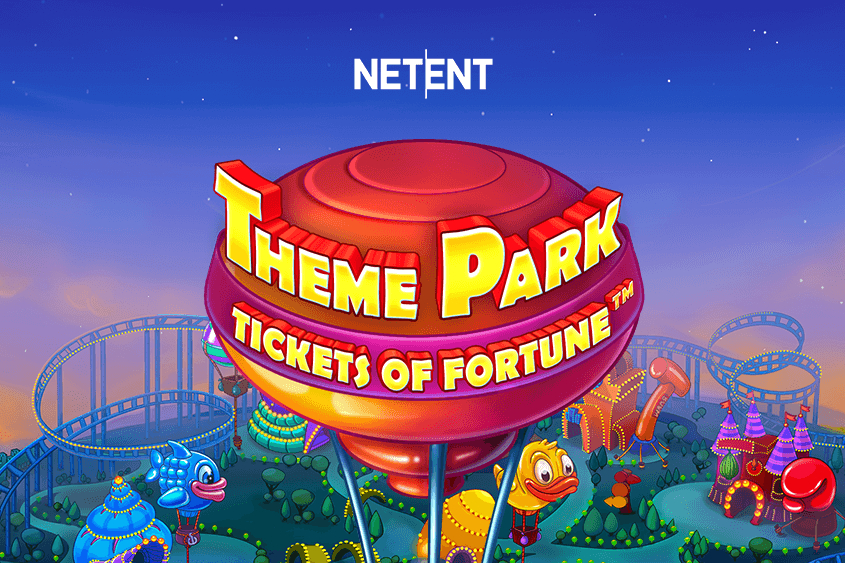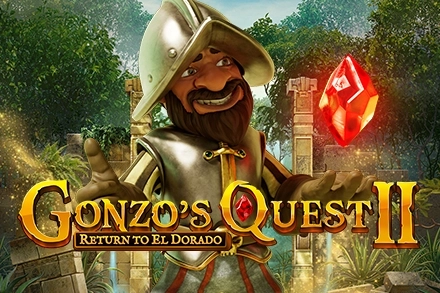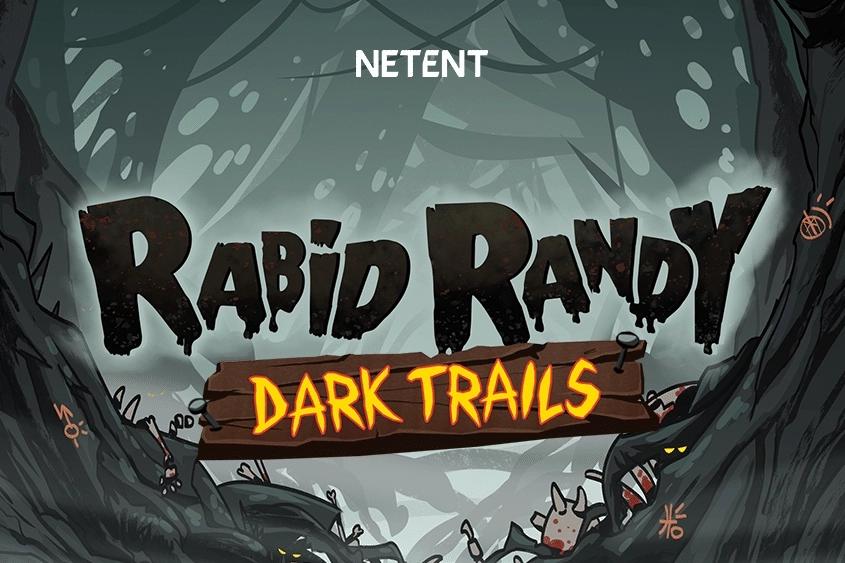
For any casino enthusiast aiming to get the most value from online games, understanding RTP – or Return to Player – is a must. RTP directly impacts your long-term chances of winning, yet it’s often misunderstood or overlooked. In this comprehensive HighRTP.com guide, we demystify RTP: explaining what it means, how it’s calculated, why it matters, and how you can leverage it to your advantage. Whether you’re spinning slots or playing table games, mastering RTP is a key step toward smarter, fairer gambling.
RTP Meaning: What Does Return to Player Mean?
RTP stands for Return to Player, which is the percentage of all wagered money that a casino game is designed to pay back to players over time. For example, if a slot machine has a 96% RTP, it will theoretically return $96 in winnings for every $100 bet, with the remaining $4 representing the casino’s profit margin (also known as the house edge).
It’s important to understand that RTP is a long-term, theoretical average. This percentage is calculated over thousands, often millions, of game rounds. It is not a guarantee for any single session or a promise of what you personally will get back. In individual play sessions, actual results can vary dramatically around the RTP. You might win above the average or lose more than expected in the short run, especially on games with high volatility. Over a huge number of plays, however, the outcomes should statistically trend toward the game’s RTP.
Key Takeaways About RTP
- RTP is always shown as a percentage (e.g., 94%, 96.5%, 99%).
- The higher the RTP, the better it is for the player — a high RTP means a lower house edge (casino advantage).
- RTP is calculated over the long term (lifetime of the game), not for each session — short-term results can deviate significantly from the stated percentage.
- RTP applies to all casino games: slots, blackjack, roulette, poker, etc. Every game has an expected payout percentage, even if not always advertised.
- Casino games are typically certified for fairness and accurate RTP by independent testing authorities before they are released to the public.
How is RTP Calculated?
Game developers determine RTP through a combination of theoretical math and extensive testing. Most modern slots and digital games simulate millions (or even billions) of rounds to estimate the expected payout percentage. In simple terms, RTP can be represented by a formula:
RTP (%) = (Total Amount Returned to Players / Total Amount Wagered) × 100
After a game’s RTP is initially calculated, it is usually verified by third-party testing labs like eCOGRA or iTech Labs. These independent auditors run their own simulations and mathematical analysis to ensure the game’s actual payout performance aligns with the published RTP and that the outcomes are truly random (thanks to Random Number Generator technology). In regulated markets, a game won’t be approved for real-money play until its RTP and fairness are certified.
In skill-influenced games or classic table games, RTP can also be derived analytically from the game rules. For example, using optimal strategy in blackjack or video poker will yield the maximum RTP for those games (often 99%+). If you’re curious to dive deeper into the math or even calculate simple game RTPs yourself, check out our guide on how to calculate RTP for formulas and real-world examples.
RTP and House Edge: Two Sides of the Same Coin
While RTP tells you the percentage returned to players, the house edge tells you the percentage that the casino expects to keep. They are two sides of the same coin, related by a simple equation:
House Edge (%) = 100% – RTP (%)
For example, if a game has a 96% RTP, its house edge is 4%. Similarly, a European roulette game with 97.3% RTP (single-zero roulette) has a 2.7% house edge. The higher the RTP, the lower the house’s advantage, meaning more of the wagered money is paid back to players on average.
Understanding the house edge is crucial because it directly affects how quickly you might lose money on average. A game with a huge 10% house edge (90% RTP) will eat your bankroll much faster than a game with a modest 2% house edge (98% RTP). This is why experienced players gravitate toward games with smaller house edges. To learn more about how reducing the house edge improves your odds, read our in-depth analysis of house edge vs. RTP, which breaks down the concept further.
Why RTP Matters for Casino Players
Understanding RTP can empower both casual and serious players in several important ways:
- Choose better-paying games: By selecting games with higher RTP, you get more value out of each wager over time. Even a small percentage difference (say 96% RTP vs. 92% RTP) can have a big impact on your bankroll over thousands of spins or hands.
- Assess a game’s fairness: If a new slot or game has a below-average RTP (for instance, 90% when many slots pay ~96%), it’s a warning that the game offers a worse deal to the player. Savvy gamblers check the RTP and favor games that give them a fairer shot.
- Develop better strategies: Knowing a game’s RTP—especially in combination with its volatility—helps you tailor your play style to your goals and budget. For example, if you need to meet bonus wagering requirements, you might stick to high-RTP, low-volatility games for a steadier outcome.
- Set realistic expectations: Even a high-RTP game can have wild swings in the short run. Understanding that RTP is a long-term average helps you stay realistic. It reminds you that luck and volatility influence short-term results, so you won’t always see outcomes match the RTP in a single session. This knowledge can encourage more disciplined bankroll management.
RTP in Slots vs. Table Games
RTP values can vary widely between different types of casino games. Here’s how payout percentages typically compare in online slots versus traditional table games:
Online Slots
Most modern video slots have an RTP in the range of 94% to 97%. Generally, around 96% or higher is considered a high payout slot, while anything below ~94% is on the low side. Some well-known examples of high-RTP slots include:
- NetEnt’s Blood Suckers – RTP ~98.0% (one of the highest-paying standard slot games online).
- Play’n GO’s Book of Dead – RTP ~96.21% (this can vary by casino, so always check the game info).
- Big Time Gaming’s White Rabbit Megaways – RTP ~97.72%.
- Thunderkick’s 1429 Uncharted Seas – RTP ~98.6%.
- Playtech’s Ugga Bugga – RTP ~99.1% (a classic slot with one of the highest RTPs ever, albeit with very simple gameplay).
Keep in mind that some slots are released with multiple RTP settings (for example, 92%, 94%, 96%), and online casinos may choose to offer a lower-paying version to increase their profit margin. This means the same slot title might return less to you at one casino than it would at another. Always check the paytable or information screen for the listed RTP at your casino. If you find a favorite game running at a lower RTP than usual, you might want to seek it out elsewhere.
Also, note that massive progressive jackpot slots often have lower base-game RTPs compared to regular slots. This is because a portion of each bet goes toward funding the jackpot prize. The trade-off is the potential for a life-changing win if you hit the jackpot. Just be aware that if you don’t hit the big one, the regular payouts on these games are calibrated to be lower on average to account for the jackpot funding.
If you’re actively looking for games with the best payout percentages, check out our regularly updated list of top high RTP slots, which highlights slots known for giving players excellent long-term returns.
Table Games
Classic casino table games tend to offer even higher RTPs than slots, often because skilled play or favorable rules can push the payout percentage very high. For example:
- Blackjack (European rules): RTP around 99.5%–99.6% when using perfect basic strategy.
- Baccarat (Banker bet): RTP of 98.94% on the banker wager (one of the simplest bets with a very low house edge).
- French Roulette: RTP up to 98.65% if the table uses the “la partage” or “en prison” rule on even-money bets (which refunds half your bet when the ball lands on zero).
- Jacks or Better Video Poker: RTP up to 99.54% with the best possible paytable (9/6 full-pay version) and optimal play.
Other games like craps, certain poker-based table games, and other video poker variants can also have very high returns if you stick to the best bets or paytables. However, to achieve these peak RTP numbers, you often need to follow optimal strategies and avoid any side bets or sucker bets. Side bets (like the tie bet in baccarat, insurance in blackjack, or most proposition bets in craps) usually carry a much lower RTP, so they will drag down your overall returns if you play them.
How Volatility Works with RTP
RTP tells you how much a game pays back in the long run, but it doesn’t tell you how that payout is delivered in the short run. That’s where volatility (or variance) comes into play. In simple terms:
- Low-volatility games tend to provide small, frequent wins. These games have more consistent payouts, so your results in short sessions will often be closer to the stated RTP (though not exactly the same).
- High-volatility games tend to pay out more sporadically, but the wins can be much larger. You might go many spins with no significant win, then hit a big payout. This means your short-term results can swing wildly above or below the RTP.
Your playing experience will feel very different in a low-volatility game versus a high-volatility game, even if both have the exact same RTP. A related metric is hit frequency (the percentage of spins that result in any win). High-volatility slots usually have a lower hit frequency (wins are rare but often bigger), while low-volatility slots have a higher hit frequency (wins are frequent but smaller). Still, two games could both have a 96% RTP by balancing win size versus win frequency differently. In short, volatility is about the consistency and risk level of payouts, while RTP is about the overall percentage returned in the long term. Smart players consider both factors when choosing a game that suits their risk tolerance and bankroll.
For a deeper dive into how volatility and RTP each affect your gameplay (and why neither can be looked at in isolation), see our detailed guide on RTP vs. Volatility.
Why Casinos Don’t Always Offer the Highest RTP
Not all online casinos offer every game at its maximum RTP setting. Some game providers give casinos flexibility by releasing slots with multiple RTP options (for example, one version at 96%, another at 94%, and another at 90%). Unfortunately, this means that one casino can choose a lower RTP version of a game to increase their profit margin. High-profile reputable casinos (for instance, brands like Roobet or Stake) tend to be upfront about game RTPs and often stick to the highest settings. However, less scrupulous sites might quietly run games at the lower settings without drawing attention to the reduced payout.
- Always check the game’s info screen or paytable for the RTP value – especially when playing at a new or unfamiliar casino. The information is usually available in the help menu of the slot. If you can’t find the RTP listed anywhere for a game, that’s a warning sign of a lack of transparency.
- Play at fair and transparent casinos: Stick to sites with a good reputation for fairness (user reviews and our comparisons on HighRTP.com can help). These casinos are less likely to opt for unfairly low RTP settings and more likely to disclose game information to players.
What is a “Good” RTP?
What’s considered a “good” RTP varies by game type, but here are some general benchmarks to keep in mind:
- Online Slots: Around 96% or higher is generally considered very good for slots. The most generous online slots can reach 97–99% RTP. On the flip side, anything much below 94% would be considered poor value in today’s market.
- Table Games: Roughly 98% or higher is common for the main bets in games like blackjack, roulette, or baccarat. Look for rules that favor the player (e.g., single-zero roulette wheels, blackjack games with good rules) to get the highest RTP. Many of these games can offer 99%+ RTP when played optimally.
- Live Dealer Games: Most live dealer versions of blackjack, baccarat, and roulette have RTPs comparable to their digital counterparts (often in the high 90% range) as long as you avoid side bets. Live game shows and specialty games vary, but the best ones also advertise high RTPs. Always check the game info, even for live games.
Remember, even a 1% difference in RTP can have a significant effect on your results over the long haul. For example, a game at 95% RTP will statistically lose you twice as much money over time as a similar game at 97% RTP. That’s why it pays to seek out the highest RTP games available. Our casino game reviews and rankings at HighRTP.com make it easy to find which titles give you the best bang for your buck.
🏆 Top 50 Highest RTP Slots in 2025
💎 Why This List Matters
Based on verified data from 29,094 games in our database, these slots offer the highest statistical return to players. Every game listed has been tested by independent labs like eCOGRA, iTech Labs, or GLI.
📊 Data Source: Game provider specifications, regulatory filings, and certified RNG testing reports (Last updated: October 2025)
| 🏅 Rank | Game Name | Provider | RTP % | Volatility | Max Win | Status |
|---|---|---|---|---|---|---|
| 🥇 1 | Goblin’s Cave | Playtech | 99.32% | ●●● High | 150x | ✅ Active |
| 🥈 2 | Ugga Bugga | Playtech | 99.07% | ●●● High | 1,000x | ✅ Active |
| 🥉 3 | Mega Joker | NetEnt | 99.00% | ●●● High | 2,000x | ✅ Active |
| 4 | Book of 99 | Relax Gaming | 99.00% | ●●● High | 9,999x | ✅ Active |
| 5 | Ooh Aah Dracula | Barcrest | 99.00% | ●● Medium | 5,000x | ✅ Active |
| 6 | Monopoly Big Event | Barcrest | 99.00% | ●● Medium | 10,000x | ✅ Active |
| 7 | Tropic Reels | Playtech | 98.95% | ● Low | 1,000x | ✅ Active |
| 8 | Jackpot 6000 | NetEnt | 98.86% | ●● Medium | 6,000x | ✅ Active |
| 9 | 1429 Uncharted Seas | Thunderkick | 98.60% | ● Low-Med | 670x | ✅ Active |
| 10 | Marching Legions | Relax Gaming | 98.12% | ●●● High | 25,000x | ✅ Active |
| 11 | The Catfather | Pragmatic Play | 98.10% | ●● Medium | 10,000x | ✅ Active |
| 12 | Rainbow Riches Pick N Mix | Barcrest | 98.00% | ●● Medium | 500x | ✅ Active |
| 13 | Blood Suckers | NetEnt | 98.00% | ● Low | 7,500x | ✅ Active |
| 14 | Jokerizer | Yggdrasil | 98.00% | ●● Med-High | 6,000x | ✅ Active |
| 15 | 1010! Deluxe | 1×2 Gaming | 98.00% | ● Low | Varies | ✅ Active |
| 16 | Starmania | NextGen | 97.87% | ● Low | 50,000 coins | ✅ Active |
| 17 | White Rabbit Megaways | Big Time Gaming | 97.72% | ●●● High | 13,000x | ✅ Active |
| 18 | Hotline | NetEnt | 97.04% | ● Low-Med | 150x | ✅ Active |
| 19 | Reel Rush | NetEnt | 97.00% | ● Low-Med | 480x | ✅ Active |
| 20 | Blood Suckers II | NetEnt | 96.94% | ●● Medium | 2,000x | ✅ Active |
🎮 Try These High RTP Slots Now (Free Demo)
Experience the difference high RTP makes. These verified 97%+ RTP slots from NetEnt, Pragmatic Play, and Relax Gaming are available to play instantly in demo mode:
You have viewed 12 of 1229 games!
🎯 Pro Strategy: Notice how these high RTP games (97%+) give you more frequent small wins compared to lower RTP slots? That’s the statistical edge working in your favor over hundreds of spins.
🎲 RTP Comparison: Table Games vs Slots
One of the most important facts about RTP: table games almost always beat slots. If pure mathematical advantage is your goal, blackjack and baccarat offer significantly better returns than even the highest RTP slots.
🃏 Blackjack
With perfect basic strategy
House Edge: 0.40%
✅ Best RTP of any casino game
🎰 Best Slots
Goblin’s Cave (Playtech)
House Edge: 0.68%
🥇 Highest verified slot RTP
🎴 Baccarat
Banker bet (commission)
House Edge: 1.06%
💼 Simple strategy, great RTP
📊 Complete RTP Breakdown by Game Type
| Game Type | Typical RTP Range | Best Possible RTP | House Edge | Skill Impact |
|---|---|---|---|---|
| 🃏 Blackjack (Basic Strategy) | 99.28% – 99.60% | 99.60% | 0.40% | 🔥 High – Strategy crucial |
| 🎲 Craps (Pass Line) | 98.59% – 98.64% | 98.64% | 1.36% – 1.41% | ⚡ Medium – Bet selection matters |
| 🎴 Baccarat (Banker) | 98.94% | 98.94% | 1.06% | 💤 None – Pure chance |
| 🎡 French Roulette | 98.65% | 98.65% | 1.35% | 💤 None – La Partage rule |
| 🎡 European Roulette | 97.30% | 97.30% | 2.70% | 💤 None – Single zero |
| 🎰 High RTP Slots | 97% – 99.32% | 99.32% | 0.68% – 3% | 💤 None – RNG controlled |
| 🎰 Average Slots | 94% – 96% | 96% | 4% – 6% | 💤 None – RNG controlled |
| 🎡 American Roulette | 94.74% | 94.74% | 5.26% | ❌ AVOID – Double zero kills RTP |
| 🎰 Progressive Jackpot Slots | 85% – 92% | 92% | 8% – 15% | ⚠️ Low RTP – Big win potential |
💡 The Mathematics Don’t Lie
Over $10,000 in total wagers, here’s what different RTP percentages mean for your bankroll:
- 99.60% RTP (Blackjack): Expect $9,960 back — lose $40
- 98% RTP (High Slots): Expect $9,800 back — lose $200
- 96% RTP (Average Slots): Expect $9,600 back — lose $400
- 92% RTP (Progressive Slots): Expect $9,200 back — lose $800
- 94.74% RTP (American Roulette): Expect $9,474 back — lose $526
🎯 The Takeaway: A 4% RTP difference = $400 difference on $10K wagered. Choose wisely!
🧮 RTP Calculator: See the Real Impact
Understanding RTP is one thing — seeing how it affects your real money is another. Use these examples to calculate your expected return based on your typical session budget.
💰 Calculate Your Expected Return
Expected Return = (Total Wagered) × (RTP %)
📊 Real Session Examples:
| Session Budget | RTP % | Expected Return | Expected Loss | Game Example |
|---|---|---|---|---|
| $100 | 99.60% | $99.60 | -$0.40 | Blackjack (perfect strategy) |
| $100 | 98.00% | $98.00 | -$2.00 | Blood Suckers (NetEnt) |
| $100 | 96.00% | $96.00 | -$4.00 | Average online slot |
| $100 | 92.00% | $92.00 | -$8.00 | Mega Moolah (progressive) |
| $1,000 | 99.00% | $990.00 | -$10.00 | Mega Joker |
| $1,000 | 96.00% | $960.00 | -$40.00 | Typical slot |
| $1,000 | 92.00% | $920.00 | -$80.00 | Low RTP slot |
| $5,000 | 96.00% | $4,800 | -$200 | Average slot |
| $5,000 | 99.00% | $4,950 | -$50 | High RTP slot |
🔥 The $150 Difference!
On a $5,000 session, playing a 99% RTP slot vs a 96% RTP slot saves you $150. That’s the power of choosing high RTP games!
🏢 RTP Performance by Software Provider
Not all game developers are created equal. Some providers consistently deliver high RTP across their portfolio, while others… not so much. Here’s the definitive ranking based on average RTP across thousands of games:
| Rank | Provider | Avg RTP | Highest RTP Game | Games in DB | Rating |
|---|---|---|---|---|---|
| 🥇 | NetEnt | 96.50% | Mega Joker (99.00%) | 200+ | ⭐⭐⭐⭐⭐ |
| 🥈 | Push Gaming | 96.50% | Jammin’ Jars (96.83%) | 50+ | ⭐⭐⭐⭐⭐ |
| 🥉 | Yggdrasil | 96.30% | Jokerizer (98.00%) | 100+ | ⭐⭐⭐⭐⭐ |
| 4 | Play’n GO | 96.28% | Reactoonz (96.51%) | 150+ | ⭐⭐⭐⭐⭐ |
| 5 | Relax Gaming | 96.18% | Book of 99 (99.00%) | 80+ | ⭐⭐⭐⭐⭐ |
| 6 | Quickspin | 96.15% | Sakura Fortune (96.58%) | 60+ | ⭐⭐⭐⭐ |
| 7 | Big Time Gaming | 96.10% | White Rabbit (97.72%) | 40+ | ⭐⭐⭐⭐ |
| 8 | Nolimit City | 96.08% | Tomb of Akhenaten (96.09%) | 50+ | ⭐⭐⭐⭐ |
| 9 | Pragmatic Play | 96.05% | The Catfather (98.10%) | 300+ | ⭐⭐⭐⭐ |
| 10 | Microgaming | 95.98% | Immortal Romance (96.86%) | 500+ | ⭐⭐⭐⭐ |
⚠️ Important: Configurable RTP Warning
Some providers like Playtech, IGT, and certain Pragmatic Play games offer configurable RTP versions. This means casinos can choose between 96%, 94%, or even 92% versions of the same game. Always check the RTP in the game info/paytable before playing. Reputable casinos display this clearly.
🎮 Play Top Provider Slots Now
Experience games from the highest RTP providers. Try these demos from NetEnt, Yggdrasil, and Play’n GO:
You have viewed 9 of 245 games!
How to Use RTP to Your Advantage
Now that you know what RTP is, here are some practical ways to use that knowledge to improve your online casino experience:
- Prioritize high-RTP games: Before playing, do a little research. Use resources like our best high RTP slots list or game reviews to find titles with above-average payout percentages. Choosing a 97% RTP game over a 92% RTP game will give you a significantly better chance in the long run.
- Learn the optimal strategy (for skill games): If you’re playing games like blackjack, video poker, or certain poker-based games, know that the advertised RTP assumes optimal play. Study basic strategy charts or poker strategy guides so you can make the best decisions. Mistakes in these games cost you money by lowering the effective RTP.
- Avoid low-RTP versions of games: As mentioned earlier, if you notice a game’s RTP is unusually low (compared to known values or industry averages), consider switching casinos or playing a different game. There’s no reason to settle for a 90% RTP game if a 96%+ version is available elsewhere. Your choice of casino can directly affect the payouts you get!
- Take advantage of bonuses wisely: Casino bonuses and promotions don’t change a game’s RTP, but they can improve your overall value. For instance, if you have bonus funds to play with, a high-RTP game will help stretch those funds further. Just be mindful of the bonus terms (like wagering requirements and game restrictions) and try to use your bonus on games with solid RTPs so you’re not fighting both a wagering requirement and a steep house edge.
Finally, always remember that RTP is about the mathematical expectation over the long term. It does not guarantee short-term outcomes. No matter how high a game’s RTP is, you can still have losing sessions (or winning sessions) purely due to luck. Use RTP as a guide to make informed decisions and tilt the odds closer in your favor, but always play responsibly and within your limits.
HighRTP.com – Your Trusted Source for Fair Play
At HighRTP.com, our mission is to empower players with transparent, data-driven information about casino games. We focus on crucial factors like RTP, house edge, and volatility to help you find the fairest and most rewarding games. Whether you’re just learning the basics of Return to Player or looking for strategies to optimize your gameplay, we provide expert guides, handy tools (like RTP calculators), and up-to-date game rankings to give you an edge. Before you spin the reels or place your bets, check our resources to ensure you’re getting the best possible odds. Smarter players demand better value — and we’re here to help you achieve exactly that.
RTP Explained: Frequently Asked Questions
What is RTP in slots?
In slot machines, RTP (Return to Player) is the percentage of all bets that the machine will pay back to players over millions of spins. For example, a 96% RTP slot will return about $96 per $100 wagered in the long run. However, this is a theoretical average—your own results can vary widely in the short term. One player might hit a big win in 10 spins, while another might have a dry spell; in both cases, the game still has the same RTP working behind the scenes.
Does higher RTP mean I’ll win more?
Higher RTP is better for you as a player in the long run because it means the game has a lower house edge. Over many sessions, a 97% RTP game will on average return more of your wagers as winnings than a 92% RTP game will. **But** this doesn’t guarantee you’ll win more in any given session. RTP doesn’t control how frequently you win or how big those wins are—that’s where luck and volatility come in. So while a higher RTP game gives you a better statistical chance over time, you can still have unlucky streaks (or lucky ones) regardless of the RTP in the short term.
Can casinos change the RTP of slot games?
Casinos can choose from the RTP settings that the game developer provides, but they can’t arbitrarily change the payout of a game on a whim. Many modern online slots are released with multiple RTP versions (e.g. 90%, 94%, 96%), and the casino selects one of these when adding the game to their site. The chosen RTP is built into the game’s software. A reputable casino will always disclose the game’s RTP in the information section. It’s a good habit to check the info page of any slot you play. If a casino isn’t transparent about RTP or you suspect a game is paying significantly less than it should, it might be best to play elsewhere.
Is RTP important for skill games like blackjack or poker?
Absolutely. RTP is just as important for games of skill as it is for slots. In fact, skilled play is what allows you to actually achieve the high RTP that games like blackjack or video poker advertise. For example, blackjack might have an RTP of ~99.5% with perfect play. If you deviate from basic strategy, the casino’s edge increases and the RTP you experience drops. The same goes for video poker: choose the right paytable and make the statistically correct decisions, and you’ll get close to the maximum RTP (often 99% or more). So, knowing the optimal strategy and sticking to it is key to getting the best return in these games.
How can I verify the RTP of a casino game?
The easiest way is to look in the game’s help or information section. Online slots and digital table games usually list the RTP in the paytable or info screen. If you’re on an online casino site, sometimes the game’s lobby icon or description will show the RTP as well. Additionally, game developers often publish their games’ RTPs on their official websites or in press releases. Websites like HighRTP.com (and other review or database sites) also compile RTP information for popular games. If you can’t find RTP info for a game, that lack of transparency could be a red flag.
What is a “hit frequency” in slots? Is it the same as RTP?
Hit frequency (also called hit rate) is different from RTP. Hit frequency is the percentage of spins that result in any win (even a small one). RTP, on the other hand, is the total percentage of wagered money that’s paid back to players over time. For example, a slot might have a hit frequency of 30% (meaning roughly 3 out of 10 spins pay something) and an RTP of 96%. Another slot could have a 45% hit rate but also a 96% RTP. The difference is that the first game pays less often but probably has larger average wins, while the second game pays more often but with smaller wins. Both can still return 96% of the money wagered in the long run. In short: RTP tells you how much gets paid back, and hit frequency tells you how often you win — both factors together shape how a slot feels to play.
Where can I find the best high RTP slots?
We’ve got you covered. Check out our dedicated guide to the top high RTP slots available online. We’ve done the research to list games with outstanding RTPs, along with their volatility levels and other key details. This way, you can easily find slots that give you the best chance at getting a fair return on your money. New high-RTP games come out all the time, and we update our list regularly, so you’ll always have the latest info on the best-paying slots.
Still have questions about RTP, casino fairness, or finding the best-paying games? Be sure to explore our other in-depth guides here on HighRTP.com, or reach out to our team of experts. We’re here to help you gamble smarter by knowing the numbers behind the games.




















